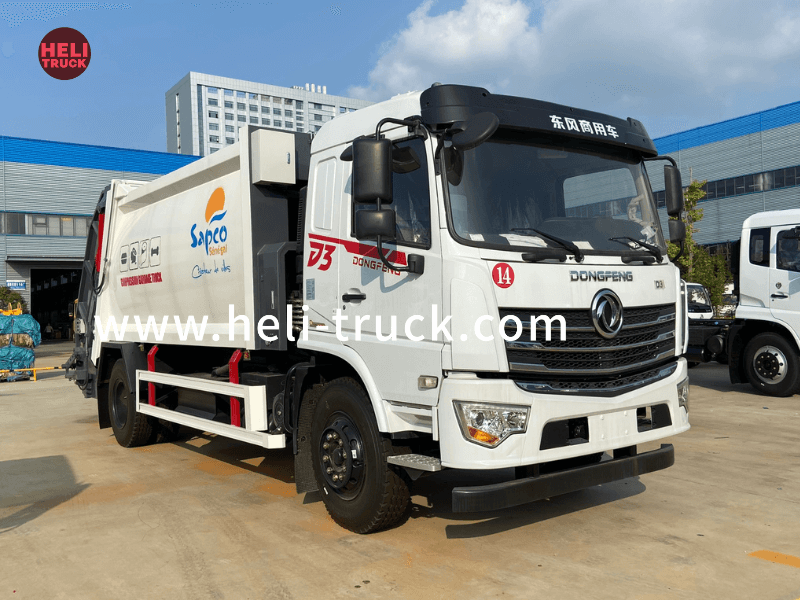Maximizing Work Truck Payload Capacity A Comprehensive Guide
Introduction Work trucks are essential vehicles for a variety of industries, including construction, landscaping, agriculture, and transportation. One of the key considerations when choosing a work truck is its payload capacity, which refers to the maximum weight of cargo and equipment that the truck can safely carry. Understanding and maximizing a work truck's payload capacity is crucial for ensuring efficiency, safety, and compliance with regulations. In this article, we will explore the factors that influence work truck payload capacity, how to calculate it, and strategies for maximizing it to enhance productivity and profitability. Factors Influencing Work Truck Payload Capacity 1. Gross Vehicle Weight Rating (GVWR) The Gross Vehicle Weight Rating (GVWR) is the maximum weight that a vehicle is rated to carry, including its own weight, passengers, cargo, and fuel. The GVWR is determined by the vehicle manufacturer and is displayed on a label typically located on the driver's side door jamb. Exceeding the GVWR can compromise the vehicle's safety and performance, so it is essential to know this rating when loading a work truck. 2. Curb Weight Curb weight refers to the weight of the vehicle when it is empty, with a full tank of fuel and all necessary fluids. Subtracting the curb weight from the GVWR gives the payload capacity of the work truck. It is important to consider the curb weight when calculating the maximum payload that can be safely added to the vehicle. 3. Axle Weight Ratings In addition to the GVWR, work trucks have axle weight ratings that specify the maximum weight that each axle can carry. There are typically separate ratings for the front and rear axles, and these ratings must be considered when distributing the payload evenly across the truck to prevent overloading any single axle. 4. Suspension System The suspension system of a work truck plays a crucial role in supporting the payload and ensuring a smooth and stable ride. Upgrading the suspension system, such as installing heavy-duty springs or airbags, can increase the payload capacity of a work truck by providing additional support and reducing sagging when carrying heavy loads. 5. Tires The tires on a work truck are another critical component that contributes to its payload capacity. Tires have a maximum load rating that indicates the maximum weight they can safely carry. It is important to ensure that the tires on a work truck are properly inflated and have the appropriate load rating to support the intended payload. Calculating Work Truck Payload Capacity To calculate the payload capacity of a work truck, follow these steps: 1. Determine the GVWR of the work truck from the manufacturer's specifications. 2. Identify the curb weight of the work truck by weighing it when empty. 3. Subtract the curb weight from the GVWR to obtain the available payload capacity. 4. Consider the axle weight ratings and distribute the payload evenly across the truck to avoid overloading any single axle. 5. Check more of the tires to ensure they can support the intended payload. By following these steps, you can accurately determine the maximum payload that your work truck can safely carry. Strategies for Maximizing Work Truck Payload Capacity 1. Use Lightweight Materials One of the most effective ways to maximize work truck payload capacity is to use lightweight materials for cargo and equipment. For example, aluminum toolboxes and racks are lighter than steel counterparts and can help reduce the overall weight of the payload without sacrificing durability. 2. Optimize Cargo Placement Properly distributing the cargo across the work truck is essential for maximizing payload capacity and maintaining stability while driving. Place heavier items closer to the cab and over the axles to prevent overloading the rear of the truck. Utilize storage solutions such as racks and bins to organize and secure the cargo efficiently. 3. Minimize Unnecessary Equipment Regularly review the equipment and tools carried in the work truck to identify items that are no longer needed or rarely used. Removing unnecessary equipment can help reduce the overall weight of the payload and free up space for essential items, increasing the truck's payload capacity. 4. Upgrade to High-Strength Materials Consider upgrading the truck bed or cargo area with high-strength materials such as carbon fiber or composite materials. These materials are lighter than traditional steel and can increase the payload capacity of the work truck while maintaining durability and strength. 5. Invest in Payload Management Systems Payload management systems utilize sensors and technology to monitor the weight distribution and payload of the work truck in real time. These systems provide valuable data to help optimize payload capacity, prevent overloading, and ensure safety compliance. Investing in a payload management system can help maximize the efficiency and productivity of work truck operations. Conclusion Maximizing work truck payload capacity is essential for optimizing efficiency, safety, and profitability in various industries. By understanding the factors that influence payload capacity, calculating it accurately, and implementing strategies to maximize it, businesses can enhance the performance of their work trucks and achieve greater success in their operations. Whether it's choosing lightweight materials, optimizing cargo placement, or investing in payload management systems, there are numerous ways to increase the payload capacity of a work truck and unlock its full potential. By following the guidelines outlined in this article, businesses can make informed decisions and effectively manage their work truck payload capacity for improved productivity and competitiveness. 